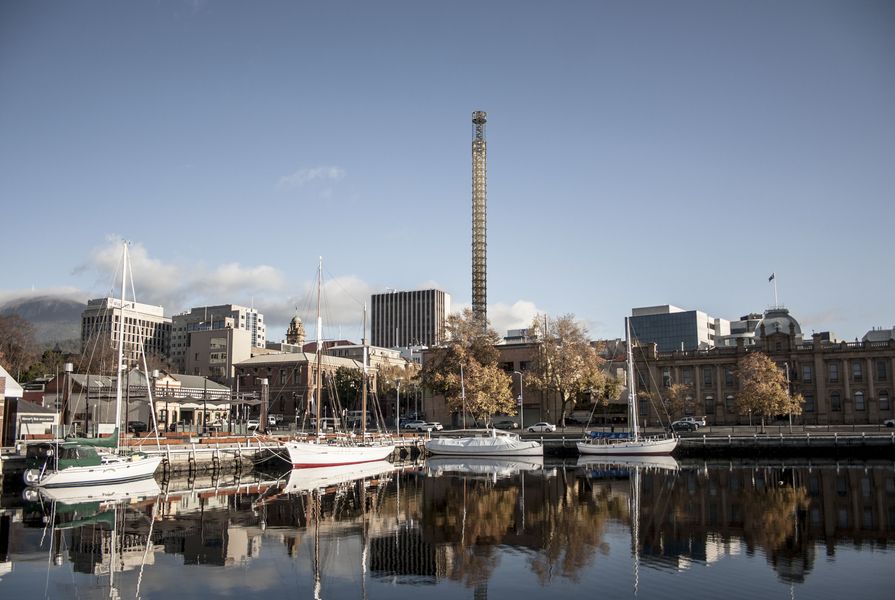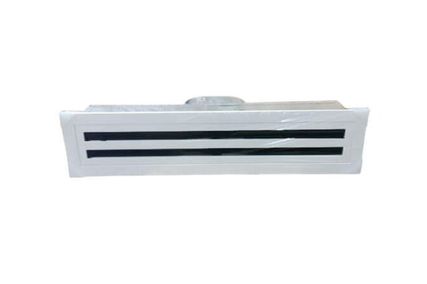A 117-metre climbable, glowing steel tower proposal for Tasmania’s capital is set to become a beacon of heart health.
The tower, designed by architects Robert Morris-Nunn and David Johnston of Circa Morris-Nunn in collaboration with artist Rafael Lozano-Hemmer, will include a double helix set of stairs. Visitor will be invited to climb the 650 steps (or around 40 flights of stairs) to ascend to the top of the six-metre-wide tower, clad in a semi-transparent mesh fixed with white LED lights. A number of interactive elements will measure and gather biometric data, including the heart rates and other health indicators, of visitors.
Architect Robert Morris-Nunn said, “The tower has been designed around the challenge and experience of climbing up and down its 1,300-plus individual steps – 650 ascending and 650 descending – making the physical exertion an integral part of the experience.”
The Art Tower builds on the work of artist Rafael Lozano-Hemmer, which involves public participation, data collection and audio-visual expression. His previous work Pulse Room, acquired by the Museum of Old and New Art (MONA) in Hobart measures participants’ heart rates via a set of handles, with each beating heart expressed as a flashing lightbulb in a darkened room.
The proposed Detached Art Tower will be clad in steel mesh with white LED lights.
Image: Courtesy Detached Cultural Organization
The data gathered by the Art Tower will be used by the Menzies Research Institute to research population health.
“Detached has a strong commitment to advancing and challenging contemporary thinking across art, science and health,” said Magdalena Lane, assistant director of Detached Cultural Organization, a not-for-profit group established in 2008 as an independent platform for contemporary art, science, education and health.
The Art Tower will be installed on a 5,000 square metre site in Hobart’s CBD, formerly the site of the Mercury newspaper, which was acquired by Detached Cultural Organization in 2013 from News Corp. If constructed, it will stand at double the height of Tasmania’s current tallest building, the Wrest Point Tower, and almost triple Hobart’s current planning limit. It will have 360-degree panoramic views over the city and surrounding natural landscape.
The bold concept has been inspired by the success of David Walsh’s private art museum, MONA, and hopes to replicate its contribution to the social, cultural and economic fabric of Hobart. MONA’s creative director Leigh Carmichael is the project director of Detached.
The proposed Detached Art Tower will be 117-metres tall with panoramic views over Hobart and the surrounding natural landscape.
Image: Courtesy Detached Cultural Organization
“David Walsh has shown what happens when you dream big,” said Penny Clive, director of Detached. “In collaboration with others, we take on the challenge and responsibility to building on MONA’s success.”
But Walsh, while supporting the idea of the tower, is not impressed with its design. He wrote in the Mercury: “The tower design, to my eye, is a little undernourished, at least in the light of day. I feel this tower is a creature of the night. It should be built, but a reassessment to make it a little more aesthetically pleasing could be appropriate.”
Detached Art Tower was launched at Hobart’s winter arts festival Dark Mofo on 13 June 2015. A temporary lighting installation, Pulse Column by Rafael Lozano-Hemmer (similar to New York’s Tribute in Light designed by architect Richard Nash Gould), will mark the site of the proposed tower for the duration of the festival until 22 June 2015.




















